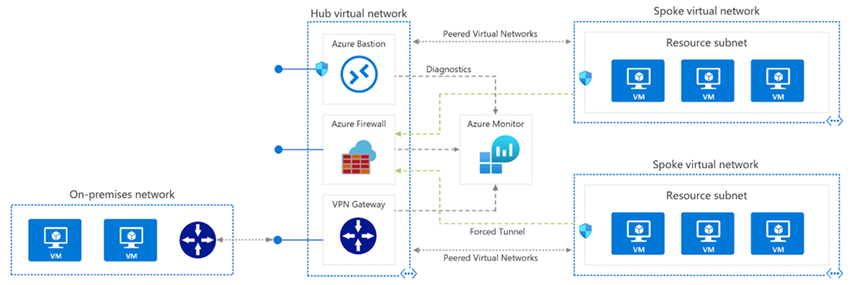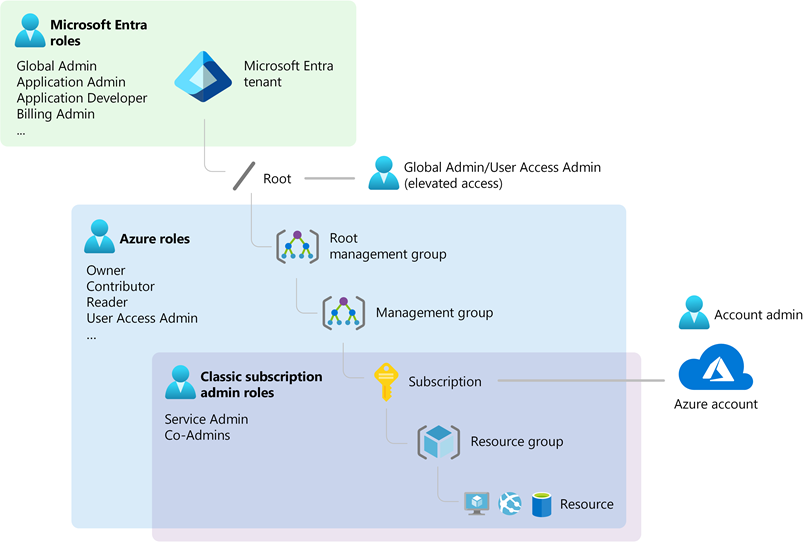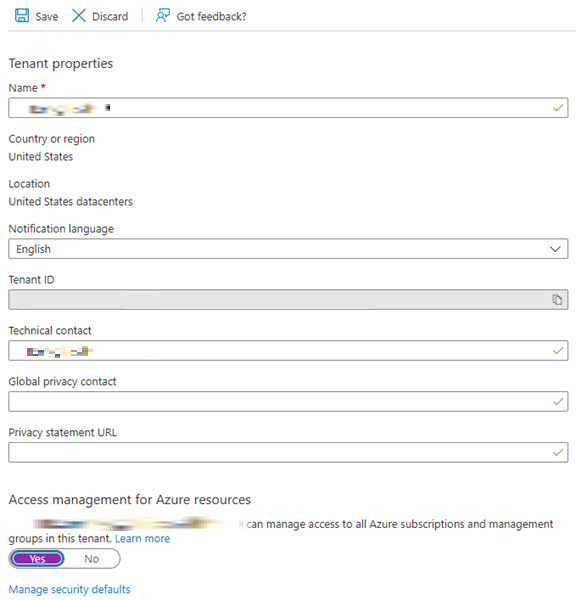Deploy Azure Landing Zone for Nonprofits
The Azure Landing Zone for Nonprofits is a preconfigured, scalable foundation for managing cloud infrastructure in nonprofit organizations. It provides a blueprint for setting up core Azure services, such as networking, management, identity, and security. It ensures that cloud resources are efficiently managed and securely governed from the start. Its simple design offers nonprofit organizations a way to rapidly deploy cloud environments that align with best practices for scalability, security, and compliance.
The Azure Landing Zone for Nonprofits offers a comprehensive setup that includes management group structures, policy enforcement, logging, monitoring, and network connectivity. It integrates security features such as Microsoft Defender for Cloud, backup and disaster recovery services, and Azure Key Vault for secrets management. By deploying the landing zone, you gain a secure, scalable foundation for their Azure resources, allowing you to focus on delivering your mission-critical services while benefiting from strong governance and operational efficiency.
Follow the steps in this article to deploy the Azure Landing Zone for Nonprofits using Azure Resource Manager templates (ARM templates). In this deployment, you configure core infrastructure elements such as management groups, log analytics, networking, Azure security, and more.
This image is a network diagram showing a hub and spoke deployment for identity management and connectivity subscription.

These instructions help you successfully deploy an Azure landing zone tailored for nonprofit organizations, providing a scalable and secure platform for managing resources and workloads. The elevated permissions allow you to configure essential elements like management groups, network topology, and security settings.
Management group and subscription organization
To begin, it helps to understand the difference between Microsoft Entra ID roles and Azure role-based access control (RBAC) roles.
Microsoft Entra ID roles control the administrative privileges to tenant-wide services such as Microsoft Entra ID, and other Microsoft services including Microsoft Teams, Microsoft Exchange Online, and Microsoft Intune.
Azure RBAC roles control the administrative privileges to Azure resources such as virtual machines, subscriptions, and resource groups.
The Azure RBAC Owner and User Access Administrator roles can modify the role assignments on Azure resources. By default, the Microsoft Entra Global Administrator role doesn't have permission to manage access to Azure resources. It must be explicitly enabled. For more information, go to Elevate access to manage all Azure subscriptions and management groups.
Important
Microsoft recommends that you use roles with the fewest permissions. This helps improve security for your organization. Global Administrator is a highly privileged role that should be limited to emergency scenarios when you can't use an existing role.
This diagram shows the relationship between Microsoft Entra ID roles and Azure RBAC roles:

Prerequisites
Because Azure Landing Zone for Nonprofits is a complete, end-to-end setup of your Azure tenant as a whole, you need the Owner permission at the Azure tenant root scope. These instructions explain how a Global Admin in Microsoft Entra ID can elevate themselves or others to have the required permissions before starting the deployment.
Note
Both the role assignment and deployment are a one-off exercise. After deployment, we recommend that you remove the role assignment from the tenant root scope in Azure. To deploy Azure Landing Zone for Nonprofits on Microsoft Azure, you need:
Dedicated Azure subscriptions: You need two different Azure subscriptions. It's required to have multiple dedicated subscriptions for different platform components. This requirement ensures easier management and higher security, and it enables standalone compliance process.
A global admin in Microsoft Entra ID: A user who has global admin rights in the Microsoft Entra ID environment where you plan to deploy the landing zones must initiate the deployment.
Elevation of privileges:
Elevate the global admin privileges to grant the User Access Administrator role at the tenant root scope (/).
Perform an explicit role assignment (Azure RBAC) at the tenant root scope using Azure CLI or PowerShell.
Elevate access for deployment
To manage resources across the tenant, you must temporarily elevate your access as a global admin. After deployment, we recommend that you remove this elevated access.
Sign into the Azure portal as the global admin.
Navigate to Microsoft Entra ID > Properties.
Under Access management for Azure resources, toggle the setting to Yes.

Grant explicit access at tenant root scope
You can use either Azure CLI or PowerShell to assign the necessary permissions to the user performing the deployment.
Note
You don't have to be a global admin to deploy Azure landing zones. This role assignment can be made to a different user or group. Using Bash (Azure CLI):
# Sign into AZ CLI, this will redirect you to a web browser for authentication if required
az login
# Assign Owner role to Tenant root scope ("/") as Owner (fetches object Id of the current user)
az role assignment create --scope '/' --role 'Owner' --assignee-object-id $(az ad signed-in-user show --query "objectId" --output tsv)
Using PowerShell:
# Sign in to Azure from PowerShell, this will redirect you to a web browser for authentication if required
Connect-AzAccount
# Get object Id of the current user for the role assignment
$user = Get-AzADUser -UserPrincipalName (Get-AzContext).Account
# Assign Owner role to Tenant root scope ("/") as a User Access Administrator
New-AzRoleAssignment -Scope '/' -RoleDefinitionName 'Owner' -ObjectId $user.Id
Note
It can take up to 15 minutes for permissions to propagate at the tenant root scope. Log out and log back in to refresh the token before proceeding with the deployment.
Deployment steps
Follow these steps to deploy:
In Microsoft Cloud Solution Center on the Azure Landing Zone for Nonprofits tile, select Go to setup.
On the Deployment location tab, select the Azure region where you want to deploy the resources. Choose the region that aligns with compliance requirements and the geographic location of your users. Select Next.
On the Management Group and Subscription Organization tab, you organize subscriptions and management groups for the platform. In the Management Group prefix field, provide a unique prefix for the management group structure (maximum 10 characters). For example, NPO. Select Next.
On the Management and Connectivity tab, configure core platform services such as identity, management, and connectivity.
Under Management subscription in the Subscription dropdown, select a subscription for core management resources.
Under Azure Monitor, select Yes for Deploy Log Analytics workspace and enable monitoring for your platform and resources. Select the number of days you want for Log Analytics Data Retention (days).
Configure the hub and spoke networking topology.
Example hub network configuration:
- Virtual Network Name: ntwrk01
- Virtual Network Address Prefix: 10.0.0.0/16
- Subnet Name: subnet01
- Subnet Address Prefix: 10.0.1.0/24
- VPN Gateway Subnet: 10.0.2.0/27
- Recovery Services Vault Name: keyVault01
- Key Vault Name: keyVault02
Select Next.
On the Management and Connectivity tab, configure spoke networks, backup and recovery, and workload landing zones.
Under Landing Zone subscription in the Subscription dropdown, select a subscription. Make sure this subscription is different from the one selected in step 4a.
Complete the spoke network settings.
- Spoke network: Provide the network name and address prefix for workload-specific spoke VNets.
- Backup and recovery: Configure a Recovery Services vault for backup and disaster recovery.
- Key Vault: Set up Azure Key Vault for secrets management.
Example spoke network configuration:
- Virtual network name: spokeVNet01
- Virtual network address prefix: 10.1.0.0/16
- Subnet name: subnet01
- Subnet address prefix: 10.1.1.0/24
- Key Vault Name: keyVault02
- Recovery Services vault name: recoveryKeyVault01
Select Review + Create, and then select Create.
postdeployment tasks
Policy and governance: Review and refine the policies applied across management groups.
Monitoring: Ensure that log analytics and monitoring systems are properly configured for your environment.
Networking: Verify that the hub and spoke topology is correctly established and that VPN gateways are configured.
Troubleshooting
This section outlines common errors and issues that can occur during the deployment or operation of the Azure Landing Zone for Nonprofits and provides steps to resolve them.
Conflict: Failed to add subscription to management group
This error occurs because there's a conflict when trying to add a subscription to a management group.
To resolve this issue, ensure that the subscription selected in the landing zone is different from the one used for the management and connectivity configurations. This separation is required and ensures optimal resource management and security compliance across different operational environments.
Conflict: The vault name is already in use. Vault names are globally unique so it's possible that the name is already taken.
This error message indicates that the deployment failed due to a conflict with the vault name. The specific error code is VaultAlreadyExists, which means that the vault name is already in use.
Causes for this issue include:
Vault name conflict: The vault name is already in use by another Key Vault.
Recoverable state: If the vault with the name was recently deleted, it might still be in a recoverable state and not yet purged.
To resolve this issue, you can:
Choose a different name: Select a different, unique name for the key vault that isn't already in use.
Purge the vault: If you're sure that the vault name isn't taken and it was recently deleted, you need to purge the vault before reusing the name. You can follow the instructions in the provided link to purge the vault: Purge a key vault.